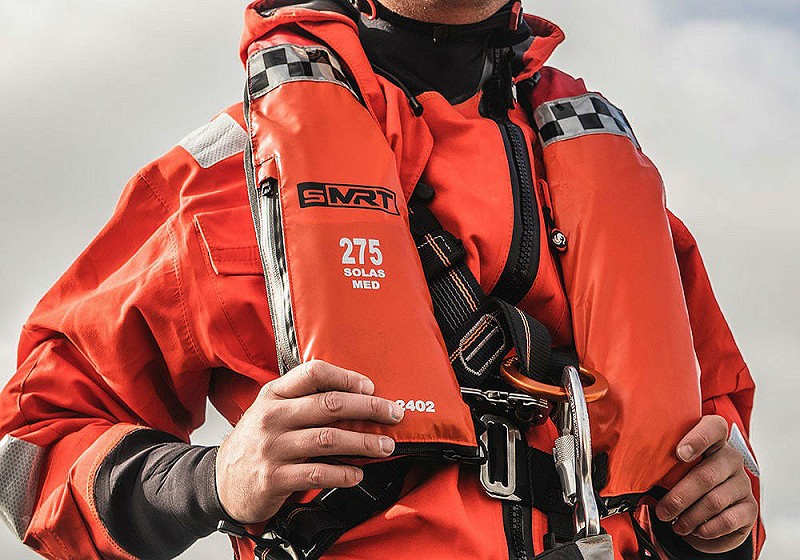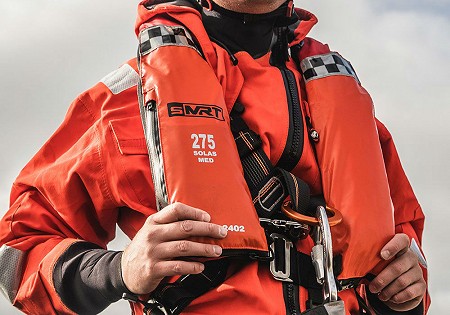What are the different levels of buoyancy?
In this article, we will cover and explain the different ranges of buoyancy that you are likely to find when looking for a PFD and what that means for you.
What does N stand for on a lifejacket?
You will often see 50N on buoyancy aids and 100N or 150N on life jackets, this is to indicate how buoyant they are. The ‘N’ on a life jacket stands for Newtons, which is a measure of force. For example, 10 Newtons is equivalent to 1 kilogram of buoyancy. There are currently four primary European standards for buoyancy, 50N, 100N, 150N and 275N.

Pictured: The sMRT Wind 275N SOLAS PFD integrated with the sMRT AU10 PLB.
Below we explain briefly what each of the main standards for buoyancy means and where you would expect to find them used.
50N (ISO12402-5)
A 50N rated aid provides a minimum of 5kg of buoyancy. Buoyancy aids at level 50 are recommended for use by those who are competent swimmers and who are near to land, or who have help close at hand. However, they do not have sufficient buoyancy to protect a person who is unable to help themselves. They are not designed to turn a person from a face-down position in the water and should not be used in any other circumstances. Standards applicable to this level; EN 393 or ISO 12402 – 5.
100N (ISO12402-4)
A 100N PFD provides a minimum of 10kg of buoyancy per lifejacket. This level of lifejacket is intended for use in sheltered and calm waters. 100N does not have the sufficient buoyancy to protect a person in rough waters and it will not turn the wearer so that they are safe. This level is intended for those who may have to wait for rescue, but are likely to do so in sheltered water. The device should not be used in rough conditions. Standards applicable to this level; EN 395 or ISO 12402 – 4.
150N (ISO12402-3)
A 150N PFD provides a minimum of 15kg of buoyancy per lifejacket. This is a product that is most commonly found for general use around the coast and offshore waters. A level 150 lifejacket will turn a wearer, conscious or not, into a safe position onto their back allowing them to keep their airwaves clear, reducing the risk of drowning. The performance of 150 may be affected by what the wearer is wearing, i.e. if they are wearing heavy clothes or workwear the buoyancy may not be sufficient and should therefore wear a higher-performing PFD. Standards applicable to this level; EN 396 or ISO 12402 – 3.
275N (ISO12402-2)
A 275N PFD provides a minimum of 27.5kg of buoyancy per lifejacket. This is the recommended product for those going into extreme conditions or those wearing heavy PPE clothing, which may adversely affect the buoyancy of the wearer and the self-righting capacity of lesser life jackets. It is designed to ensure that the user is floating in the correct position with their mouth and nose clear of the surface. Therefore, you are most likely to find these used in the commercial and offshore industries. Standards applicable to this level; EN 399 or ISO 12402 – 2.
We have been working with and supplying offshore workers with offshore PPE and specialist safety equipment, including PFDs for over 40 years. The right solution is dependent on your circumstance and if you have any questions, please contact us via info@mrtsos.com and we will advise on the best man overboard safety solution for you.
Contact Us
Find Us
Global Headquarters
Wescom Group,
Unit J1, Springfield Way,
Anlaby, HU10 6RJ


